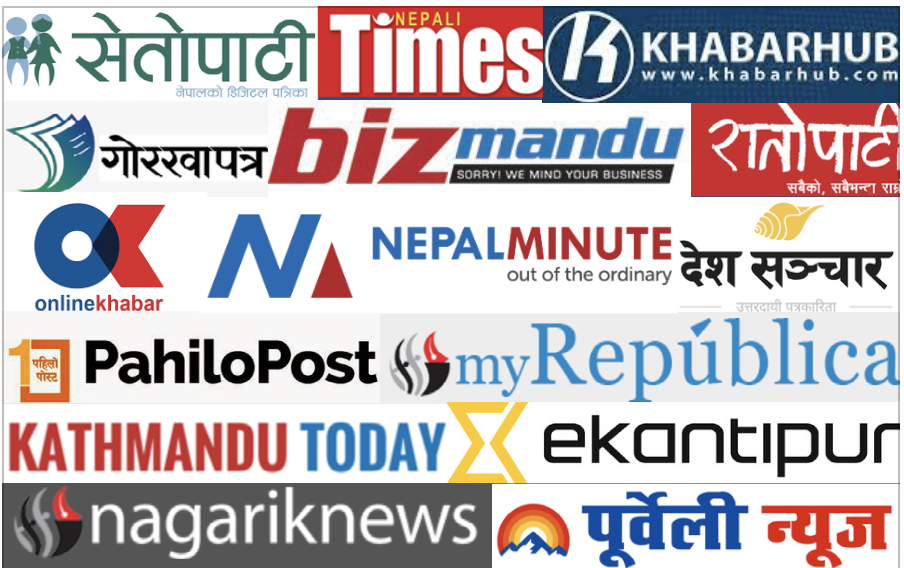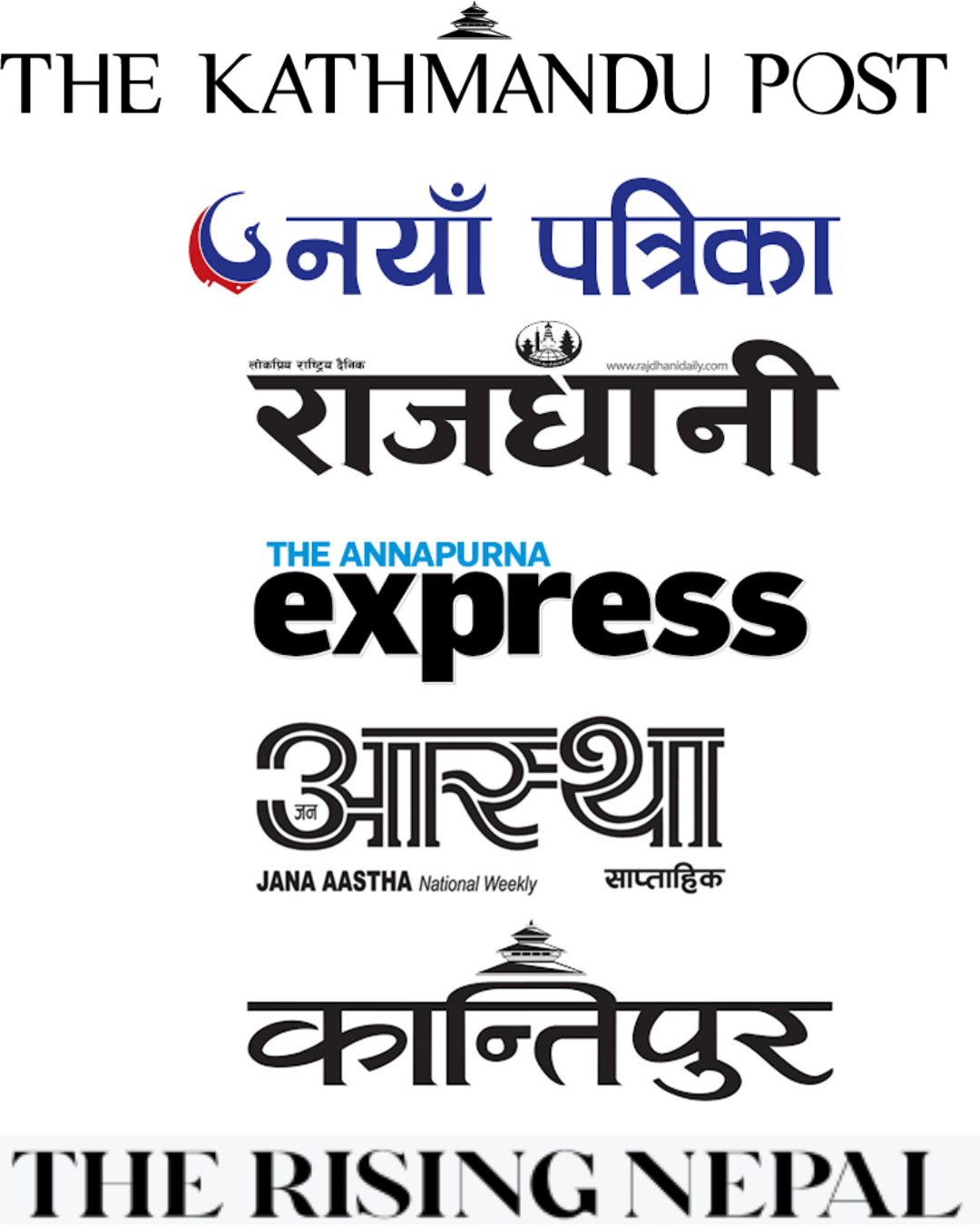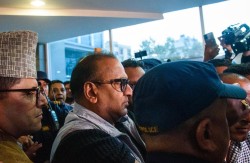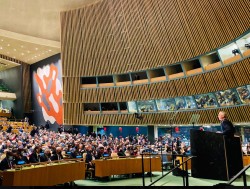Current Affairs

How many online media outlets do you regularly follow for fresh news, updates, and insights? Five? Or, fewer than that? For a count of all the available outlets, however, you need better tools than your fingers – the online media are just too many in number. Records of the Press Council of Nepal (PCN) show about 3400 online outlets registered with the official body that was set up by the government to “promote the standards of the free press.”
You have one more portal to count among these outlets as you are reading it. NepalMinute, that is, nepalminute.com, is a news story platform, where journalists will be honestly seeking truth to give you information you need to go about your life in a changing world, to NOT miss “out of the ordinary” contents.
Coming back to the PCN data, most online media were registered in the past decade, which shows rapid growth of online media in the country.
What about the online media running their show without registering themselves with the PCN or the Department of Information and Broadcasting, in defiance of the government rules? Everyone is sure to lose track of how to count how many online media are actually there from which we can choose the content that we actually need to navigate our world today.

Remarkable growth
Apart from the online news media, you must be browsing multiple YouTube channels to watch news, interviews a,nd other materials. Not all of these channels either are registered at the Department or the Press Council.
Media pundits are worried that dozens upon dozens of YouTube channels created by Nepalis are operating without registration, adding to concerns over the spread of misinformation, disinformation, and fake news on the worldwide web and across social media platforms.
The Ministry of Communication and Information Technology has made it essential for all Youtube channel operators to obtain an operational license, paying a sum of Rs 500,000 so that they can operate online television. But few YouTubers appear to have followed that rule; neither has the government been able to strictly enforce it.
Until that happens, publication and broadcasting of news, views and commentaries – through texts, photos and videos – continues unhindered on the worldwide web.
Shiva Gaunle, Editor-in-Chief of a popular Nepali online media outlet, Online Khabar, also a former president of the Federation of Nepali Journalists (FNJ), attributes the reason for the explosion of media to the advancement in technology.
“Online media is growing globally and nationally,” he told NepalMinute: “But all kinds of media, including television, radio, newspapers and online, have a shared responsibility: to educate and inspire people with a variety of useful contents.”
News media industry started growing in Nepal particularly after the restoration of democracy in April 1990. After the country embraced internet technology in the mid-1990s, The Kathmandu Post became one of the first Nepali media to go online. Soon, NepalNews.com joined the bandwagon, encouraging many more to do the same.
Thirty years later, official data show that the country boasts over 1,000 newspapers, nearly 500 frequency modulation (FM) radio stations, 200 television channels, over 3,000 online media, and numerous YouTube channels. Media education and training facilities have grown as well.
But the growth of online media seems the most remarkable.
As of early April 2021, government figures show, over 1,000 online media outlets were registered at the Department of Communication. Out of them, nearly 500 were registered during the fiscal year 2077/78. Besides getting registered, all online media need to renew their license every year. But in the last fiscal, less than 300 online media renewed their license, fuelling suspicions that not all online media may be serious.
Plenty of choices
But readers and journalists seem happy at the explosion of online media in the Nepali cyberspace.
Janakraj Sapkota, Senior Sub-Editor and Province Bureau Chief of Kantipur Daily, says readers and journalists alike are now rewarded with plenty of choices for news and information.
He told NepalMinute: "We need a lot of information, and now we have a variety of media outlets to obtain that. With a lot of online media outlets, now it’s cheaper and easier to get information.”
Questions may arise: What made such growth possible? And, are there enough takers to browse and read them all? The obvious answer to the first would be this: the rapid expansion of internet services around the country. And, answer to the second, will be not everyone has time to browse more than a few outlets daily.
The Nepal Media Survey 2020, conducted by Sharecast Initiative Nepal, showed that the percentage of regular internet users at the provincial level is 44 percent. Also, a report by the Nepal Telecommunications Authority (NTA) states that 91 per cent of the country's population has access to the internet.
According to Datareportal, as of January 2022, Nepal had 11.51 million internet users, who accounted for over 38 percent of the total population. Internet connectivity grew quite rapidly in recent years, with Kepiosdata reporting an increase of 822,000 users (nearly eight percent) between 2021 and 2022.
Such rapid expansion of internet made online classes and work-from-home – things that were completely unheard of before 2020 – possible in Nepal during the Coronavirus pandemic. It further led to the growth of online media and spread of not just accurate and useful information but also misinformation, disinformation and fake news via popular social media feeds.
Misinformation, disinformation and fake news
That has worried Arun Krishna Kharel, 21, an Information Technology student, who thinks the government must do something to ban misinformation or fake news spreading online: “I’m happy that we have so many options online these days. But I’m concerned about the fake news that can mislead many people and cause troubles. People doing such things online should be punished.” 
Sujan KC, 46, a Pre-primary School Teacher at Ullens Kindergarten, and an avid online news reader, has found a solution: “You spot a lot of fake news these days. So I’ve started visiting pages and sites of only the trustworthy media outlets. We must avoid bad ones and stick to reputable websites.”
Like many online audiences, Nirmala Dhakal, a sociologist, is equally concerned. Observing that a lot of Nepali media outlets still “need to work harder to ensure free, fair, unbiased and trustworthy journalism,” she laments at the tendency to publish or broadcast “raw and unedited contents” so as to grab public attention.
She demands that “the government's rules and regulations must be followed by all the online media, which need to be regulated too.” Advocating for better protection of women, girls and children, with stricter rules and even punishments, she adds: “The media sector too has to have rules and regulations to be followed.”
Journalists’ Code of Conduct
Not that there aren’t laws or the Codes of Conduct that Nepali journalists are required to follow. For instance, the Code of Conduct of the Press Council Nepal urges journalists to "not publish or broadcast materials or contents that jeopardise sovereignty, national unity and social harmony or misuse content” and make “journalism highly professional, decent, accountable, and responsible, in accordance with journalism's principles and international norms and values; for the protection, promotion, and use of the right to freedom of expression, information, and the press, as well as citizen's fundamental rights."
It outlines several other codes that require Nepali journalists to be socially responsible. With regard to online media, it specifically mentions that Online Media refers to the media established under current laws that accept journalism and editorial norms, as well as the method of, producing, publishing, broadcasting, or distributing process and medium of disseminating news-oriented or thematic perspectives, information, and ideas news, photos, audio, and video over the internet using signals, symbols, letters, voice, graphics, video, animation, and other forms of communication multimedia.
But, like many media-watchers, senior Journalist Kishore Nepal is worried. “There has been a flood of online media, but the government doesn’t seem to have a capacity to monitor or regulate them,” he told NepalMinute, “… There is no transparency, not even the proper registration of online media.”
Also, Kishore Nepal urges Press Council Nepal to “work harder to set things right”, and suggests the FNJ, often described as the umbrella body of Nepali journos, to “rid itself of all kinds of political influences and ambitions.”
When approached, Press Council officials initially declined to speak to NepalMinute.
When re-approached, an official said that the Press Council is trying its best to ensure that the Code of Conduct is strictly followed by all media outlets.
Possible remedies
Advocate Ananta Raj Luitel, newly-appointed legal advisor at the Press Council informed that numerous concerns have been addressed about YouTube and online media, as some operate without authority. He told NepalMinute: “Yes, unauthorised and baseless contents can sometimes create havoc in the society. We are working to discourage that by seeking written clarifications.”
He urged the FNJ too to be serious about punishing those involved in publishing objectionable contents such as the ones causing “character assassination of citizens.”
He added, “They should punish those who spread false information based on no evidence. The government has its own policy related to Press and Publication Act, Article 19. The government must enact it.”
Article 19 of Nepal Law Commission states that “Everyone has the right to freedom of opinion and expression; this right includes freedom to hold opinions without interference and to seek, receive and impart information and ideas through any media and regardless of frontiers.”
And Press and Publication Act 1991 seeks to ensure conditions “where the journalism sector of the country can enjoy the freedom of expression freely and without fear, in a decent and responsible manner.”
Bipul Pokhrel, the FNJ President, remains a busy man, coordinating with FNJ colleagues scattered around the country and working together to “ensure that press freedom and right to information are not allowed to be violated.”
To tame misinformation and fake news, he argues that “the government must enforce laws and regulations that are now in disarray”.
He told NepalMinute: “The negative media should be eliminated, and mechanisms for monitoring should be implemented. For example, we don't know how many YouTube channels there are. This needs to be investigated and regulated. We can't assume that all YouTube and online media are bad, but we can keep an eye on them so that the bad ones can be penalised.”






